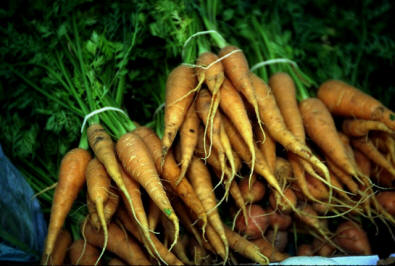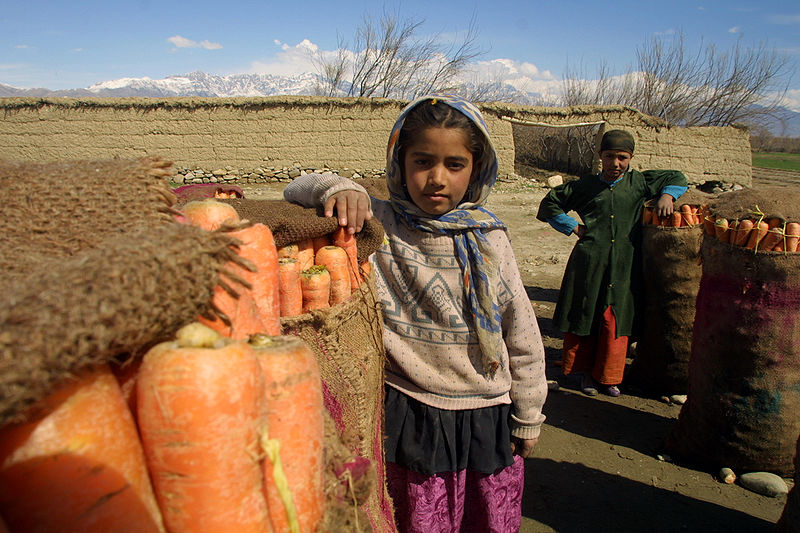Daucus carota var. sativus, The Carrot
Nutrition and Habitat
Habitat for carrots is mainly limited by temperature. While types of carrots can be found just about anywhere, Daucus carota var. sativus grows best in temperate zones. When grown outside of temperate zones cultivation techniques are needed in order to replicate cooler temperatures. Increased elevation is often used in subtropical areas to help reduce temperature and increase crop yields. Other factors in addition to temperature do contribute to the preferred habitat for Daucus carota var. sativus but temperature plays the largest role.
Other factors that make up the
habitat of Daucus carota
var. sativus
include soil, sun exposure, nutrition, and drainage.
Almost any type of soil is suitable to grow Daucus carota var. sativus , but the plants tend to prefer loam.
Loam is a type of soil that is a hybrid of sand and clay.
In addition
 to loam, carrots require a moist, yet well drained
soil. If the soil becomes wet conditions become favorable
for fungi to grow and interactions, which are explained in the
interaction section of this page, begin to develop. The
nutrition content of the soil is also a factor in the growth of
Daucus carota var. sativus. If soil is devoid of
nutrient it is unlikely that carrots will thrive in the area.
It is preferred that the soil has a relatively high content of
organic material to provide adequate nutrients. Lastly,
Daucus carota var.
sativus prefers to be located where the
plant can receive full sunlight. Full sunlight allows the
plant to reach optimal growth levels.
to loam, carrots require a moist, yet well drained
soil. If the soil becomes wet conditions become favorable
for fungi to grow and interactions, which are explained in the
interaction section of this page, begin to develop. The
nutrition content of the soil is also a factor in the growth of
Daucus carota var. sativus. If soil is devoid of
nutrient it is unlikely that carrots will thrive in the area.
It is preferred that the soil has a relatively high content of
organic material to provide adequate nutrients. Lastly,
Daucus carota var.
sativus prefers to be located where the
plant can receive full sunlight. Full sunlight allows the
plant to reach optimal growth levels.
Daucus carota
var. sativus is a plant developed from wild
varieties for cultivation. The conditions under which
carrots are grown are highly monitored to ensure optimal growth.
All species that occupy the same habitat are considered
competition and measures are taken to eradicate them.
Major producers of carrots include China, The United States, and
Russia. These three countries account for a large portion
of the commercial cultivation.
Nutrition
Daucus carota
var. sativus creates its own food through a process
called photosynthesis. Plants that produce their own food
are called autotrophs and make up the base of the food web.
The carrots placement at the base of the food web explains why
it serves as a source of food for many of the organisms it
interacts with.
Photosynthesis is a
complex process that Daucus carota var. sativus uses to
create its own food. This process utilizes CO2 as a source
of carbon to create sugars, which nourish the plant. The basic
equation for this process is carbon dioxide + water + energy =
sugar + oxygen + water.
To learn about how carrots reproduce click here.

